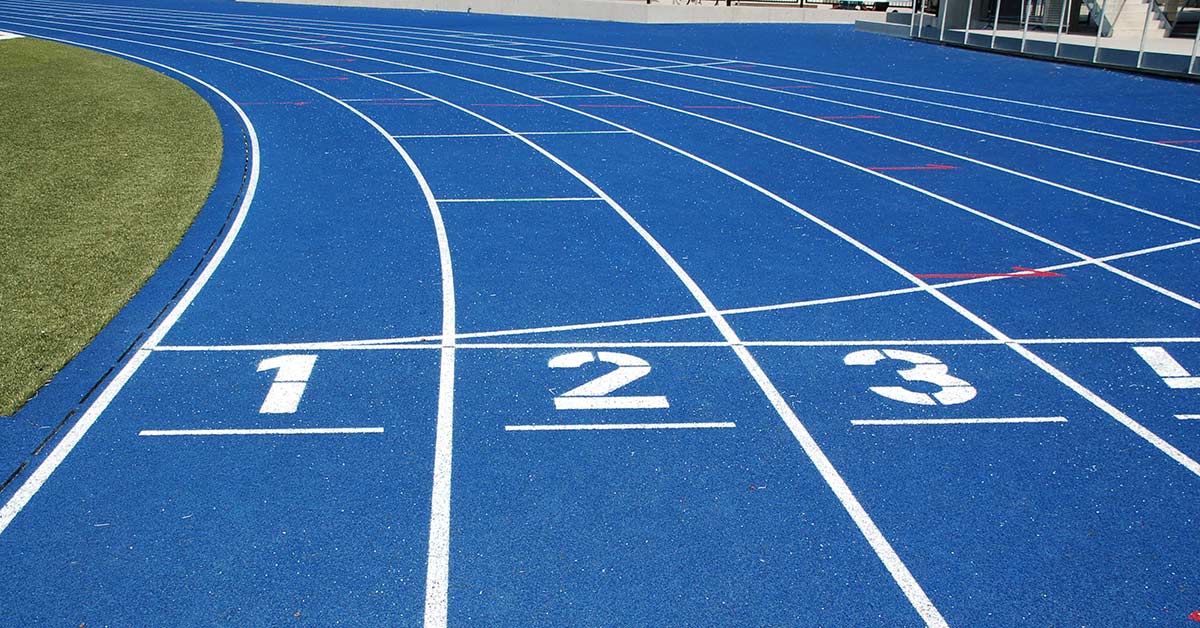[mashshare]
If you sneak into the warm-up area before a major championship race, you’ll most likely see eight different routines used by the finalists. That’s always been my favorite part of the sport to watch, because while the few seconds of the sprint race are frustratingly short, the warm-up extends to more than a couple of hours.
Admittedly, the pre-race activity of Usain Bolt has always been quite frustrating as well: physio and assisted stretching on a table, a few strides, and gone to the call room before the race. If you wanted to film drills and starting-blocks trials, the world’s fastest human was not the one to follow!
However, for the 200m competition at the 2009 World Championships in Berlin, I chose to focus on him with my Casio Exilim camera. He had just broken his own 100m world record with an unbelievable 9.58, so he was expected to do the same at 200m. He did just that in 19.19, a record that still stands 10 years later. So, in 2019, I guess it’s about time to release the footage of what happened backstage in preparation for one of the greatest performances in history:
Video HERE
Quarter-Final
On the morning of August 18, 2009, Bolt won his heat in 20.70, a 93% effort compared to his personal best (19.30 at the 2008 Beijing Olympics). I came to the warm-up track in the afternoon to record his pre-quarter-final warm-up. Obviously, he was not going to do much exercise, as he would eventually jog through in 20.41, a 94% effort. What I wanted to do was record his running motion in a sagittal plane to observe how he gets faster and faster as the warm-up progresses, and compare this with his top-speed mechanics, as displayed during the 100m world record. At 65% speed (8 m/s), his step length is 2.44 vs. 2.77 during the 100m, and his step rate is 3.3 vs. 4.4 hz, but the major change was how fast the foot was striking the ground.
Semi-Final
The next day, (August 19), Bolt won his semi-final in 20.08. I decided to film him from behind and take close-ups of his foot. A top hurdler friend told me, “Hey, that’s not how you are going to find Bolt’s secret for speed.” I laughed. At least I would get beautiful pictures that would be used by physios regarding Bolt’s atypical alignments and foot sole action in acceleration phase.
Final
The final was scheduled the next evening (August 20), his eighth race of the championships. Although this was only going to be the second one at full effort, he was already tired, to judge from his attitude and complaints. It was completely understandable, with all the attention and duties around him during these championships. This was the shortest warm-up I’d seen him do.
Under the eyes of coach Glen Mills and manager Ricky Simms, he wore the spikes and only did two starts without blocks. He only took a few steps and almost false-started on the second one. I left the warm-up area feeling that he would be lucky to win with 19.7 and not get injured. But I was so wrong, as he would run 19.19 and win by 0.62, the greatest margin ever in a contemporary world-class 200m.
A Proper Warm-Up?
Was this warm-up routine effective for Usain Bolt? Should you copy it? Does it tick all the boxes of a proper warm-up? I’ll leave these questions open while you watch Bolt’s video. To accompany your reflection, here’s the definition of warm-up by my colleague Fabio Martins, a Portuguese physio in the Shanghai province who has spent some time at the Diamond Leagues this year with Team China:
“For me, warm-ups should be athlete-dependent. If they feel more prepared from doing an in-depth one, we do it. If they like a more condensed variation, we choose that instead. However, there are always two major components I include when carrying out the preparation for athletic optimisation: movement and the mind. Transfer to sport is a critical factor when planning a training program and it should be no different when deciding on what to include within a warm-up. It could be seen as an additional opportunity to input motor skill development, remedial-based exercises, and visualisation strategies. Over time, good habits have the potential to not only improve movements, but can also instil confidence! Additionally, even further benefits can be gained via manual treatment from a therapist prior to the session/competition. With enough skill, the therapist should once again be able to potentiate the two major components: movement and the mind, to help create optimal performance outcomes!”
Since you’re here…
…we have a small favor to ask. More people are reading SimpliFaster than ever, and each week we bring you compelling content from coaches, sport scientists, and physiotherapists who are devoted to building better athletes. Please take a moment to share the articles on social media, engage the authors with questions and comments below, and link to articles when appropriate if you have a blog or participate on forums of related topics. — SF
[mashshare]




